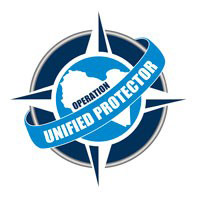As a group of thirty nations, NATO militaries are required to standardize their ammunition, logistics, tactics, and ranks to make it easier to operate as a whole. In actual combat conditions, a multinational coalition of soldiers might suddenly need to operate equipment from another member state’s military, and standardizing equipment ensures their ability to keep fighting. Ammunition from the UK may be used in rifles in Latvia, for instance; a truck from Turkey would use the same fuel as one from the US. The NATO Standardization Agreement (STANAG) formalizes the idea that standardization leads to maximum efficiency in combat situations.
There have been debates, however, over whether NATO’s standardization processes go far enough. Should the alliance use a single type of aircraft, tank, or transport vehicle? Should each soldier receive the same gear, rifle, and ammunition? What about ships and submarines? There are immediate benefits to such interchangeability: every soldier, sailor, or aircrew in every member nation would be able to use any equipment from any other member nation without pause. The streamlining of combat support and logistics would also make NATO more efficient and quicker to respond to potential crises.
However, questions such as these presuppose that NATO is a unified political entity. As NATO does not possess its own military equipment (aside from a handful of airborne-early-warning aircraft), it would be the responsibility of member nations to agree to this undertaking. Importantly, several significant issues make the standardization of NATO equipment unlikely to occur. First, outsourcing military supply and procurement to a foreign country leads to the possibility of supply interruptions during times of crisis, whether through hostile action or a political change in the alliance’s membership. Second, most arms manufacturers and military supply companies provide additional economic and employment benefits to their host nations; each state wants to support their own military-industrial sector, and favouring a foreign entity instead would be unlikely to gather much domestic support. Third, different mission profiles, operational requirements, and defence budgets dictate different forms and functions for weapons. The US, for instance, relies heavily on digital technologies and joint-unit integration that other member states may not prioritize in the same fashion.
Finally, many of the most advanced weapons platforms are beyond the budgets of most NATO members: how would, for instance, Latvia (defence budget $520 million USD) be expected to field and support F-35 aircraft from the US (approximately $100 million USD per plane) in any useful numbers? Would Croatia (defence budget $1.2 billion USD) be encouraged to purchase Braunschweig-class corvettes from Germany (approximately $390 million USD per ship)? How could member states determine a formula for which nation supports a specific operational or logistical role?
While rifles and infantry uniforms are relatively small-scale expenses, and easier to standardize than air or sea platforms, even these units are not immune from similar debates. NATO militaries do not wear a NATO emblem on their uniforms as a standard feature, for instance. Although some units will wear a temporary NATO flag insignia while deployed as part of a NATO initiative, such as the Kosovo Force (KFOR) in Kosovo, or the International Security Assistance Force (ISAF) in Afghanistan, such efforts exist to make it easier for the civilian population to identify the soldier and their mission.
Some of the concern surrounding the use of NATO patches perhaps centres on the idea of sovereignty. In each NATO nation’s military, oaths of allegiance are often sworn to symbols of sovereign power: a monarch, a constitution, the state itself, or sometimes all three at once. To place a NATO insignia alongside an emblem of sovereign power might give the impression that the alliance is superior to the rightful commander-in-chief of any particular military force. Another point of contention rests on the question of what to do in the event that a specific military conducts operations that are not part of NATO. For instance, when the Canadian Armed Forces (CAF) deploy to West Africa to train the Nigerian military (FAN) as part of Operation Naberius, displaying the NATO flag on a uniform lapel might confuse the local population about who is responsible for commanding the operation.
Ultimately, standardizing equipment and uniforms reduces to a question of sovereignty. Member states wish to retain the right to make unilateral choices regarding their armed forces, support domestic arms industries, and undertake military operations as they deem necessary. While useful, total standardization would force nations to cede a degree of sovereignty to the North Atlantic Council, the Military Committee, and the like. Such concerns prompted France to leave the alliance in 1966, when it refused to integrate its nuclear deterrent into NATO’s command structure. Despite these concerns, it remains important to ensure that NATO operations between member militaries remain as streamlined as possible, as increasing tensions around the world are going to make NATO itself more visible, more relevant, and more responsive.
Photo: “Danish Army at Combined Resolve III” by 7th Army Training Command via Creative Commons. Licensed under CC BY 2.0.
Disclaimer: Any views or opinions expressed in articles are solely those of the authors and do not necessarily represent the views of the NATO Association of Canada.



